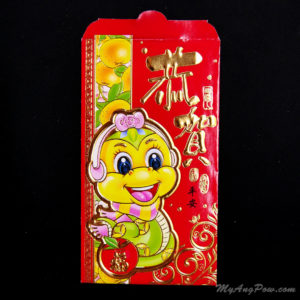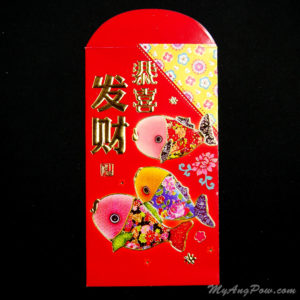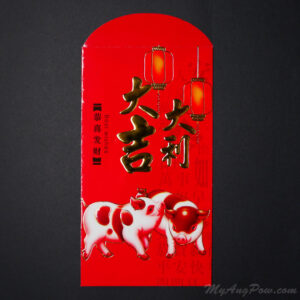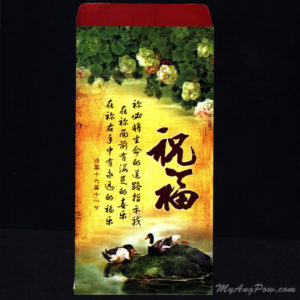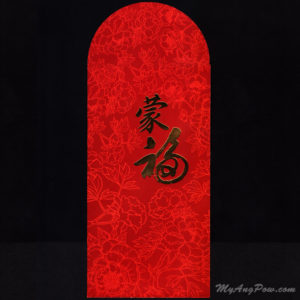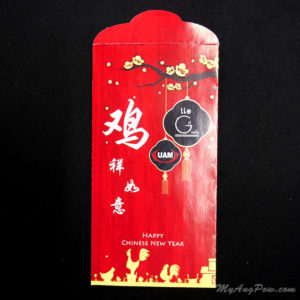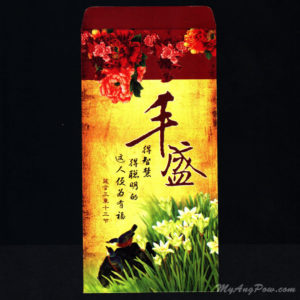Majority of the Ang Pow is red in color, or some shades of maroon, and hence the name “Red Packet”.
The red color of the envelope symbolizes auspicious(吉利, Pinyin:Jí lì), good luck, blessing, energy and it was believe by some Chinese as the color to ward off evil spirits (exorcism of evil spirits). (that’s why Chinese decorates their homes in red during Chinese New Year, and special occasions like weddings, and moving new houses.) Red also corresponding with fire (Full Yang Phase) in the Theory of the Five Elements in china, which symbolizes good fortune and joy.
The Shades of Red on screen:
However in modern Ang Pow there are other colors available, from golden color to pink, yellow, and others.
Yellow, corresponding with earth in the Theory of the Five Elements in china. Yellow as the center generates and balance Yin and Yang. Yellow signifies neutrality and good luck. Yellow is sometimes paired with red in place of gold. Yellow color is often used in decorating royal palaces, altars and temples, and is the main color for robes and attire of the Chinese emperors.
Yellow color on screen:
Gold color on screen:
Green Packets : A local adaptation of Ang Pow Culture
There is also other local adaptation of Ang Pow culture, such as the Green Packet in muslims of south east asia, mainly Malaysia, Brunei, Singapore and Indonesia. It knows as green envelope (Malay: sampul hijau or sampul duit raya). Although not all “green packet” must be green in color, but it is usually decorated with Islamic motifs. It was hand to guests (usually children less than 12 years old) who visit their homes during Eid ul-Fitr or Hari Raya Aidififtri.
Green is the traditional color of Islam. “Greenness” (in Arabic word) was mentioned many times in the Quran describing the paradise of the inhabitants.The dome that built above the tomb of the Islamic prophet Muhammad was also green in color, which was known as Green Dome and represents the Islam religion. Green becomes the favorable and respectful color in Malays.
Green color on screen:
Other local adaptation of Ang Pow is Indian’s Purple Ang Pow (Purple envelope), although not routinely practiced.



